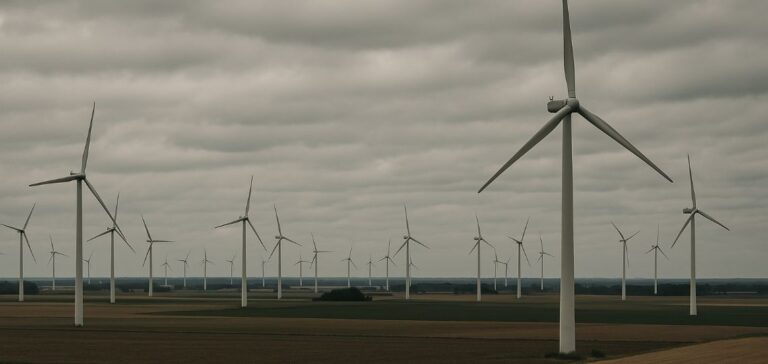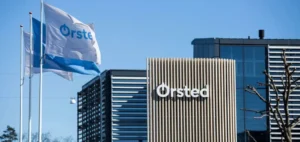The Administrative Court of Appeal of Nancy has cancelled the prefectural authorisations for the construction of a large onshore wind farm in the Ardennes, developed by EDF Renouvelables and Renner Energies. This ruling follows legal action by a local residents’ group who objected to the visual impact of the project, planned north of Reims on a sparsely wooded agricultural plateau. The court deemed that the density of existing turbines within a 10-kilometre radius created a visual saturation effect deemed excessive.
A long-standing project abruptly halted
Initiated over two decades ago, the Mont des Quatre Faux project was to comprise 63 wind turbines across eight municipalities in the Ardennes: Bignicourt, Cauroy, Hauviné, Juniville, Neuville-en-Tourne-à-Fuy, Mont-Saint-Rémy, and Ville-sur-Retourne. With a total capacity of 226 megawatts, the wind farm was intended to supply electricity equivalent to the annual consumption of 250,000 people, potentially making it one of the largest onshore wind farms in France.
The court found that the June 2017 prefectural order granting a single permit, covering both construction and operation, was flawed, despite previous irregularities being partially addressed in an earlier ruling. It further concluded that neither the site’s topography, existing vegetation, nor the proposed mitigation measures were sufficient to reduce the sense of enclosure experienced by residents.
Legal consequences and appeal prospects
The initial legal challenge by residents had been rejected in 2020 by the Administrative Court of Châlons-en-Champagne. This new appeal ruling marks a significant development for the project. The court highlighted that the visual impacts were not easily rectifiable without substantial changes to the initial plan, suggesting that a new environmental impact assessment would be required to relaunch the project.
EDF Renouvelables confirmed it had taken note of the decision and stated that the project team would review all elements before determining whether to lodge an appeal with the French Council of State. The developers have a two-month window to file a legal challenge.






















